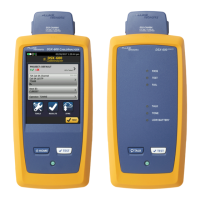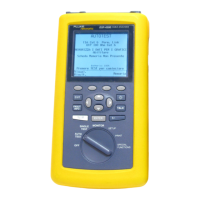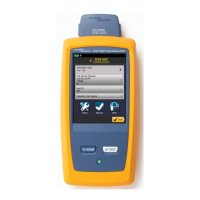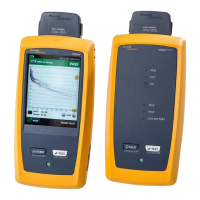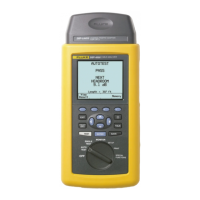DTX Series CableAnalyzer
Technical Reference Handbook
12-4
6
On the Custom screen use AD and H to
select wire pairs to enable or disable.
7
If the baseline configuration has additional wire pairs,
use BC to move among the tabs.
8
From the Custom screen, press N when you are done
creating the outlet configuration.
The tester saves the custom configuration in the
Custom list, with asterisks (*) before and after the
name.
Creating a Custom Fiber Type for Loss/
Length Tests
You can create up to nine custom fiber types for loss/length
tests. A custom fiber type includes the following settings:
•
Custom fiber name
•
Baseline limit for default settings
•
Index of refraction (n)
To create a custom fiber type for loss/length tests:
1
Turn the rotary switch to SETUP; then select Fiber Loss.
2
Select Fiber Type; then select Custom.
3
Press J Create.
4
On the Custom screen, select Name; then use the text
editing screen to enter a name for your custom fiber
type. Press
N when you are done.
5
On the Custom screen, select Use Default Values From,
select a fiber group; then select a fiber type as a
baseline for your custom fiber type.
6
To change the index of refraction (n) for your custom
fiber, select n for a wavelength; then use the editing
screen to enter a value for n. Press
N when you are
done. Repeat as necessary for other wavelengths.
7
From the Custom screen, press N when you are done
creating the fiber type.
The tester saves the custom fiber type in the Custom
list, with asterisks (*) before and after the name.

